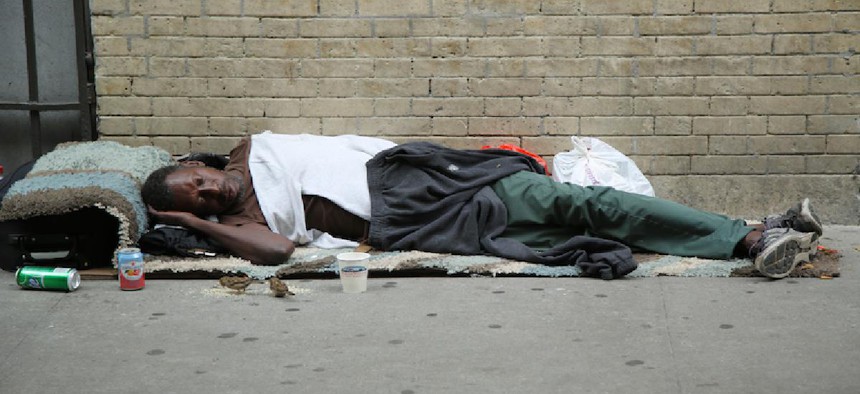Opinion
Cuomo must keep his promise to the homeless

Leonard Zhukovsky/Shutterstock
New York City and communities across New York state are struggling with a devastating crisis. Roughly 60,000 New Yorkers confront homelessness every night in our city – and that number increases to more than 80,000 statewide.
In January, faced with images of homeless New Yorkers sleeping on cold and snowy streets, Gov. Andrew Cuomo promised to build 20,000 new units of supportive housing over 15 years. But, inexplicably, he has not kept his promise, threatening long-term shelter for tens of thousands of individuals and families.
When the state Budget passed in April, it included capital funds to build the first 6,000 units over five years, but required the completion of a memorandum of understanding (MOU) between Cuomo and the leaders of the Senate and the Assembly before the funds could be spent.
However, at the end of the legislative session, the governor instead announced a one-year plan to use $150 million to fund up to 1,200 units – a fraction of his initial promise. His office claimed those funds are the first year of a five-year commitment, but unfortunately even if the governor keeps his word, the five-year commitment would fund only 6,000 of the 20,000 units he announced.
This kind of year-by-year accounting reflects a lack of understanding of how supportive housing gets built. Supportive housing developers, investors and service providers need long-term funding commitments in order to plan safe, permanent housing for the most vulnerable New Yorkers. Without state-committed capital and operating subsidies, it is impossible to attract private investment for the acquisition of land and pre-development financing.
The most likely outcome of the governor’s actions is that little or no new housing will be created.
Evidence shows that providing supportive housing to homeless people is the most cost-effective and humane way to address our current crisis. Studies throughout the country show that supportive housing reduces hospitalizations, decreases incarceration rates, lowers the number of people admitted to detox and rehab programs, and reduces the number of people in homeless shelters. Moreover, placing homeless individuals in supportive housing in New York has been found to save $10,100 per year, per tenant.
For 25 years, spanning back to Gov. Mario Cuomo’s time in office, supportive housing has been developed through a series of long-term funding commitments between New York City and New York state. These so-called “New York/New York Agreements” were binding, long-term partnerships that helped assuage investor fears and diminish risk to developers by providing long-term commitments to fund a set number of units.
Gov. Cuomo has not reached a new “New York/New York Agreement” with Mayor Bill de Blasio. Without such an agreement, the MOU is currently the only chance to create the robust long-term pipeline of supportive housing needed to address New York state’s homeless crisis.
Cuomo has announced his support of supportive housing and addressing homelessness – now, he must keep his word. If he is serious about helping the homeless, he should follow through and insist that the Senate and Assembly immediately sign the five-year funding plan he promised.
Stephen Levin is a New York City Council member and chairman of the Council’s Committee on General Welfare. Andrew Hevesi is a New York state Assemblyman and chairman of the Assembly’s Committee on Social Services.
NEXT STORY: At the DNC, woe is de Blasio